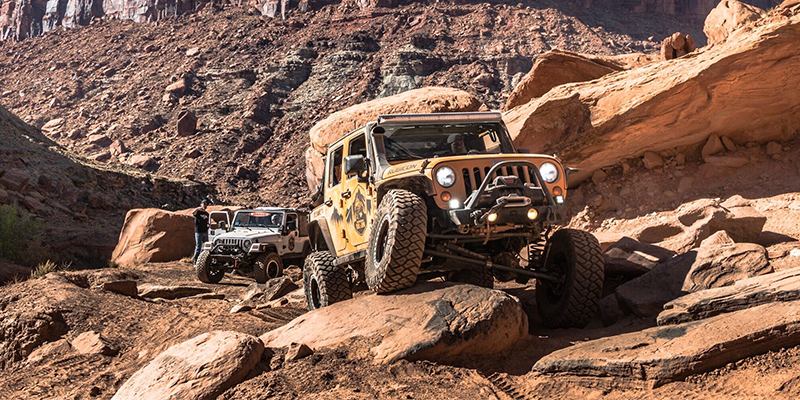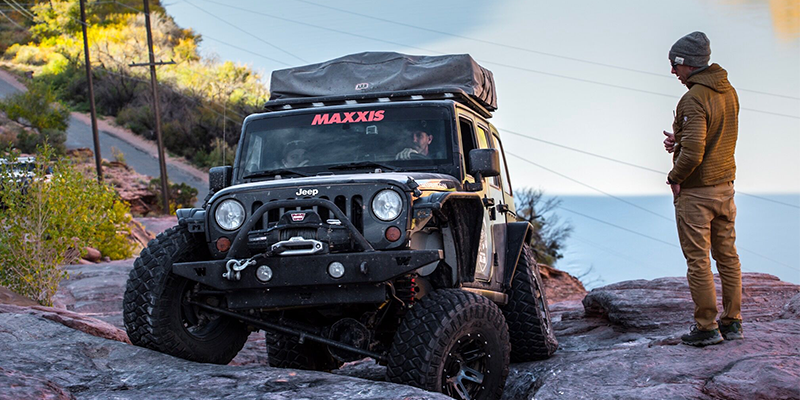Off-road tires are a different breed. Though post-winter potholes can test the mettle of any tire, the obstacles we see out on the street pale in comparison to what off-road tires are forced to deal with every time they leave the blacktop and start churning through sand, earth and mud. For most drivers – on-road or off – the goal is to avoid driving over rocks, but rock-crawling enthusiasts seek out the challenge.
Rock crawling is one of the most brutal activities that a driver can put a tire through. That challenge isn’t placed only on the skills and strategies of the drivers, either. The competitive and material demands of the sport require a product engineered to be resilient, flexible and most of all, tough.
There are two general schools of thought when it comes to rock crawling, says off-road enthusiast and tire industry veteran Joey Arbogast: Prioritizing agility with a thinner tire, or maximizing traction with a wider tire.
“A tall and skinny tire (also known as a pizza cutter) allows a vehicle to be more nimble in the rocks and navigate narrower lines,” says Arbogast. “A wider tire gets a larger footprint, allowing more grip surface.”
Regardless of the specific strategies a driver uses, the most important thing is to have a tire that can survive the mechanical stresses of constant impact and grinding with hard surfaces.
“Punctures are the first thing to take into consideration, but they are also subject to high torque loads in isolated areas. Tread lugs and the shoulder of the tires must be designed to take the abuse,” says Jason Moulton, senior product development manager at Mickey Thompson Tires and Wheels. “We make sure the carcass is puncture resistant, yet flexible to conform to unique objects. This can be accomplished by the use of unique materials along with the proper placement of plys, stiffeners and barrier strips.”
Resistance to puncturing and chipping is a matter of more than just adding more belts or increasing the thickness of the sidewalls. Many rock-crawling tires also retain a basic construction type that is virtually unheard of in modern street tires – bias-ply construction. While radial tires dominate the passenger market, some of the areas where radials excel (such as handling performance and on-road ride) are of no great help when driving over rocks at low speed.
“The biggest difference between our rock-crawling tires and on-road or non-dedicated off-road tires is the construction. We believe the best rock-crawling tires need to be bias ply because of the extra design freedom in certain areas to maximize rock-crawling performance,” says Brian Phillips, Maxxis international marketing supervisor. “Going bias-ply does have disadvantages since they don’t perform as well at higher speeds.”
In terms of tread design, the tires best suited to rock crawling maximize contact area with the rock and include well-placed biting edges.
“We make the voids large, and stagger the elements to increase the biting edges. No rock or rut is the same, so we try to make the tread pattern as ‘non-uniform’ as possible to increase the opportunities for traction in all directions,” says Moulton. “The buttress area of the upper sidewall needs to be flexible as well.”
Another important construction factor is compounding. According to Arbogast, soft compounds are usually better for rock crawling, as they prioritize grip rather than digging into softer surfaces like mud.
“Think of a day of hiking and climbing,” adds Fardad Niknam, senior director of consumer product planning and product marketing with Yokohama Tire. “You’ll need to wear shoes that can engage with the rock better. You’ll need to have more void on the shoes and flexible blocks. This is the same with rock crawling. You’ll need a softer compound and higher void ratio in order to make a better rock crawling tire.”















